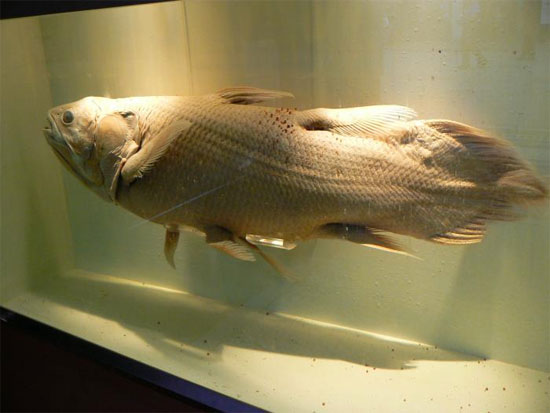Clarify the evolution of underwater animals to the surface
American biologists on April 17 said they successfully deciphered ancient-origin fin-finned fish DNA through the fossil's live fossil, providing additional clues to explaining lips change. The life of some aquatic animals moving up and down millions of years ago.
The results of this special study have been published in the British natural (Nature) magazine.

Hand fin fish
Through analysis of the finfish genome, the scientists found three million characters of DNA code, the same size as the human genome.
Scientist Jessica Alfoeldi of the Massachusetts Institute of Technology and Harvard University, USA said the genes of this fish generally evolved much slower than all other fish and terrestrial vertebrates.
The new study of the finfish genome shows that this fish is a closer relative to four-legged animals compared to the previously discovered freshwater fish in Australia and Africa.
The new finding also confirms that hand fin is a special source to study the evolution of aquatic animals that move up to land. Their genes can help explain changes, including how this terrestrial fish develops the sense of smell to recognize air and food, as well as how their immune system changes to Reacts with bacteria and viruses in new environments.
Handfin was once considered extinct about 65 million years ago, the same time as the dinosaurs. However, this hypothesis was rejected because in 1938 a hand fin fish was found in South Africa. Since then, there have been 308 other hand-finned fishes discovered.
According to the scientists, the decoding of this species of finfish this time has brought unexpected findings to the scientific community during the past century, helping to clarify the underwater studies of terrestrial animals.
- People can chemistry mermaids live in underwater cities
- New theory of evolution from water to shallow
- The evolution of animals does not keep pace with extinction
- The largest undersea volcanic eruption in the century of 2012
- Warm climate speeds up the evolution of reptiles
- Biological evolution
- The landscape of the earth surface is surprisingly beautiful
- The answer to the mystery of the evolutionary origin of the turtle
- The superhuman 'eyes' of animals
- The underwater record for 73 days
- Discovered three new species in New Zealand cave
- Underwater photography techniques make you squint
 'Fine laughs' - Scary and painful torture in ancient times
'Fine laughs' - Scary and painful torture in ancient times The sequence of numbers 142857 of the Egyptian pyramids is known as the strangest number in the world - Why?
The sequence of numbers 142857 of the Egyptian pyramids is known as the strangest number in the world - Why? History of the iron
History of the iron What is alum?
What is alum?